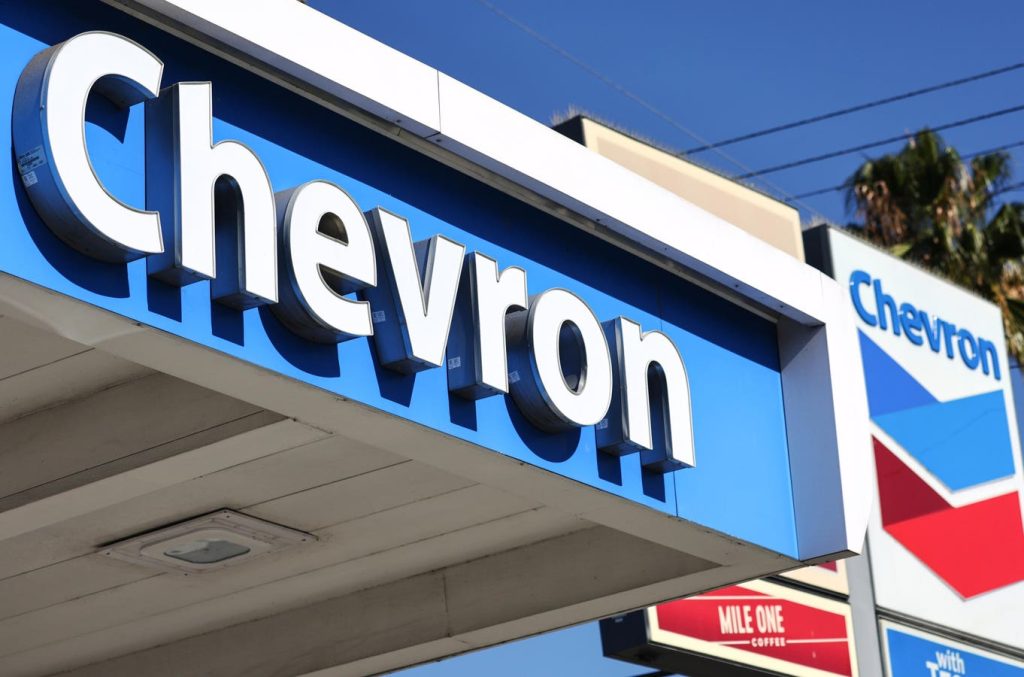Chevron Corporation (CVX), a major player in the petroleum industry, presents an intriguing investment prospect despite its recent stock performance lagging behind the broader market and its competitor, Exxon Mobil (XOM). While CVX stock is up 10% in the past year, reaching approximately $156 per share, this gain pales in comparison to the S&P 500’s 31% rise and XOM’s 14% increase over the same period. This underperformance can be largely attributed to investor apprehension surrounding Chevron’s ambitious $53 billion acquisition of Hess Corporation. Although strategically sound, granting Chevron access to substantial acreage in the Bakken Shale and bolstering its production portfolio, particularly in Guyana, the acquisition faces a significant hurdle. Exxon Mobil, a partner with Hess in a key Guyanese energy project, claims the right of first refusal, potentially complicating or even derailing the deal. This uncertainty introduces a significant element of risk for Chevron investors.
The potential disruption of the Hess acquisition stems from the intertwined relationship between Hess and Exxon Mobil in Guyana. The targeted Guyanese project likely represents a core motivation for Chevron’s pursuit of Hess, making Exxon Mobil’s potential intervention a considerable threat. This precarious situation places Chevron’s stock price under pressure as investors grapple with the uncertain future of the acquisition. While the Federal Trade Commission has greenlit the transaction, barring John Hess from joining Chevron’s board, the lingering uncertainty regarding Exxon Mobil’s stance continues to weigh on CVX shares. This stock-specific risk underscores the importance of considering diversified investment strategies, such as the High Quality portfolio mentioned in the source material, which has historically outperformed the S&P 500.
Chevron’s stock performance over the past three years has been marked by significant volatility, outpacing the fluctuations of the S&P 500. The company experienced substantial gains of 46% in 2021 and 58% in 2022, followed by a sharp decline of 14% in 2023. This volatility contrasts with the more stable performance of diversified portfolios like the Trefis High Quality Portfolio, which consistently outperformed the S&P 500 during the same period. The portfolio’s consistent performance highlights the potential benefits of diversification in mitigating risk and achieving more stable returns. Given the current unpredictable macroeconomic landscape, characterized by interest rate uncertainty and geopolitical tensions, the question remains whether Chevron will face a repeat of its 2023 underperformance or stage a recovery in the coming year.
The prevailing oil price environment plays a crucial role in Chevron’s financial performance. Despite OPEC+ production cuts, global oil markets have shown weakness due to slowing demand from China and rising U.S. supplies. Geopolitical tensions further complicate the demand outlook, contributing to oil prices trading within a relatively narrow range of $69-$91 per barrel throughout the year. While Chevron benefits from a diversified business model with exposure across the energy value chain, oil prices remain a key driver of its profitability. Recent policy signals from China suggesting increased stimulus measures in 2025 have spurred a recovery in crude oil prices, offering a potential boost to Chevron’s earnings. However, even if oil prices trend lower, Chevron’s position as a low-cost producer and its substantial revenue generation from midstream and downstream operations provide a degree of insulation against market volatility.
Chevron’s Q3 2024 financial results reveal a mixed picture. Net income declined by 31% year-over-year to $4.49 billion, or $2.48 per share, primarily due to lower refined product margins, lower crude oil prices, and the absence of favorable tax treatment. Adjusted earnings per share of $2.51 exceeded market expectations, but revenue, while beating forecasts, decreased by 6% to $50.67 billion. Despite the revenue decline, Chevron’s oil-equivalent production increased by 7% year-over-year, driven by record output in the Permian Basin and the acquisition of PDC Energy. However, the company experienced a significant drop in U.S. natural gas realization, offset by growth in international realization. These results highlight the complex interplay of factors influencing Chevron’s financial performance.
Looking ahead, projections for Chevron’s fiscal year 2024 anticipate revenues of approximately $196 billion, remaining relatively flat year-over-year. Earnings per share are forecast to reach $10.41, leading to a revised valuation of $161 per share based on a 15.5x price-to-earnings multiple. This valuation represents a modest 3% premium over the current market price. It’s important to note that these projections focus on core sales revenue from hydrocarbon sales, excluding revenue from distribution, processing, and marketing activities. Chevron’s strategic focus on portfolio streamlining, with planned asset sales in Canada, Congo, and Alaska, and cost reduction initiatives targeting $2 billion to $3 billion in savings by 2026, further shape the company’s future prospects. Comparing Chevron’s performance metrics to its peers provides valuable context for assessing its relative strengths and weaknesses within the industry.

